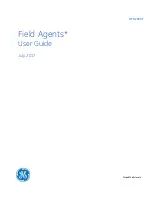
67
Appendix B
Glossary
10BASE2
—Also called thinnet Ethernet, thinnet or CheaperNet, a 10 MHz
baseband specification. Cable impedance is 50
Ω
and maximum coaxial segment
length is 185 meters (607 ft.).
10BASE5
—Also called thick Ethernet, a 10 MHz baseband specification. Cable
impedance is 50
Ω
and maximum coaxial segment is 500 meters (1,640 ft.). The
cable is commonly referred to as yellow cable. Thick Ethernet cable is typically
used as a trunk or backbone path of the network.
10BASE-FL
—IEEE 802.3 Fiber Optic Ethernet. A fiber optic standard that
allows up to 2,000 meters (6,560 ft.) of multimode duplex fiber optic cable in a point-
to-point link.
10BASE-T
—IEEE 802.3 UTP Ethernet. Low-cost Level 3 or better UTP wiring
affords 100 meters (328 ft.) of point-to-point link segments. UTP uses RJ45
connectors and sometimes 50-pin AMP connectors to a patch panel and runs at 10
MHz.
50-PIN TELCO (RJ21)
—This connector is very common in 10BASE-T wiring.
As opposed to the RJ45 connector, the 50-pin Telco connector concentrates up to
12 UTP connections onto one connection. This concentration of UTP ports is then
broken out for connection to a punch-down block inside a building’s wiring closet.
50-pin Telco connections provide a very clean, uncluttered interface to the
building’s wiring.
AT-ADAPT-2
— A harmonica-style adapter that allows direct conversion from a
50-pin Telco connector to RJ45 receptacles.
ATTACHMENT UNIT INTERFACE (AUI)
—Connection between a MAU
(transceiver) and a DTE (typically a workstation). Includes a 15-pin D-sub
connector and sometimes a 15-conductor twisted pair cable. Maximum length is 50
meters (164 ft.).
BACKUP MODULE
— A repeater that behaves as the management module
when the Master fails in a department concentrator.
BASEBAND COAXIAL SYSTEM
—A system whereby information is directly
encoded and impressed on the coaxial transmission medium. At any point on the
medium, only one information signal at a time can be present without disruption.













































